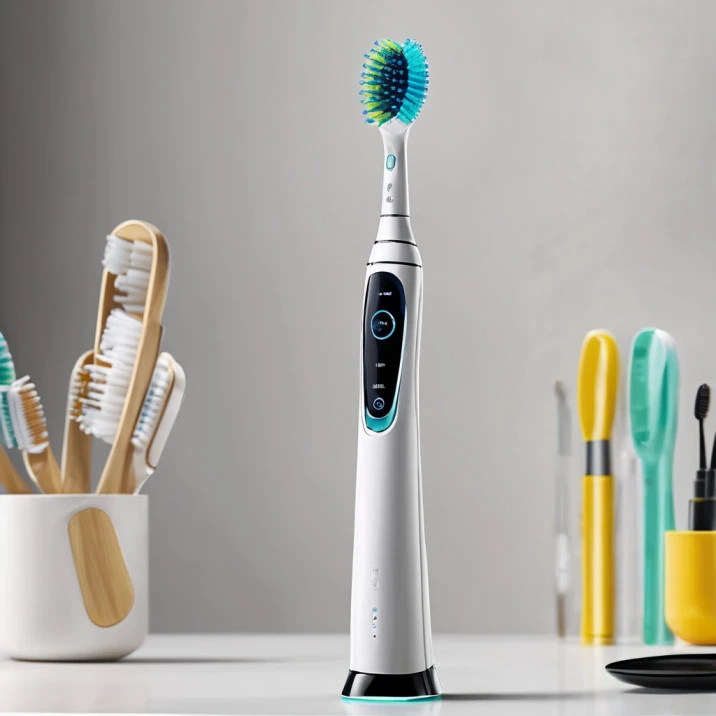Electric toothbrushes
Upgrade your oral hygiene routine with electric toothbrushes. Shop now for cleaner teeth and healthier gums. Easy to use and effective.

Electric Toothbrushes
Electric toothbrushes are oral hygiene devices that use electric power to move the brush head in various ways to effectively clean teeth. They have become increasingly popular due to their ability to provide a more thorough and efficient cleaning compared to manual toothbrushes.
Advantages of Electric Toothbrushes
- Efficient Cleaning: Electric toothbrushes can provide more brush strokes per minute compared to manual brushing, resulting in a more thorough cleaning of your teeth.
- Built-in Timers: Many electric toothbrushes come with built-in timers to ensure that you brush for the recommended two minutes, helping you maintain good oral hygiene habits.
- Pressure Sensors: Some electric toothbrushes are equipped with pressure sensors that alert you if you are applying too much pressure while brushing, preventing damage to your gums and enamel.
- Easy to Use: Electric toothbrushes are generally easier to use, especially for individuals with limited dexterity or mobility, as the brush head does most of the work for you.
- Effective Plaque Removal: Studies have shown that electric toothbrushes are more effective at removing plaque and reducing gingivitis compared to manual toothbrushes.
Types of Electric Toothbrushes
There are two main types of electric toothbrushes:
- Sonic Toothbrushes: Sonic toothbrushes use high-frequency vibrations to clean teeth and gums effectively. They can generate up to 31,000 brush strokes per minute, providing a deep clean.
- Oscillating-Rotating Toothbrushes: Oscillating-rotating toothbrushes feature a small, round brush head that oscillates and rotates to remove plaque and debris from teeth. They are known for their thorough cleaning action.
Choosing the Right Electric Toothbrush
When selecting an electric toothbrush, consider the following factors:
- Bristle Type: Choose soft bristles to avoid damaging your gums and enamel.
- Brushing Modes: Look for a toothbrush with multiple brushing modes to suit your specific needs, such as sensitive teeth or whitening.
- Battery Life: Consider the battery life of the toothbrush and whether it is rechargeable or requires battery replacement.
- Additional Features: Some electric toothbrushes come with features like Bluetooth connectivity, travel cases, or UV sanitizers.
Maintenance and Care
To ensure the longevity of your electric toothbrush and maintain optimal oral hygiene, follow these maintenance tips:
- Replace Brush Heads: Replace the brush head every 3-4 months or sooner if the bristles become frayed.
- Clean the Toothbrush: Regularly clean the toothbrush handle and charger to prevent bacterial growth.
- Store Properly: Store the electric toothbrush upright and allow it to air dry between uses to prevent mold and bacteria buildup.
- Keep Charged: Ensure your electric toothbrush is fully charged to maintain optimal performance.
Conclusion
Electric toothbrushes offer several advantages over manual toothbrushes, including efficient cleaning, built-in timers, and pressure sensors. By choosing the right electric toothbrush and following proper maintenance practices, you can improve your oral hygiene and overall dental health.
What's Your Reaction?

















